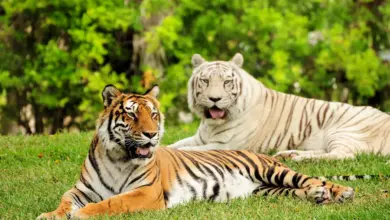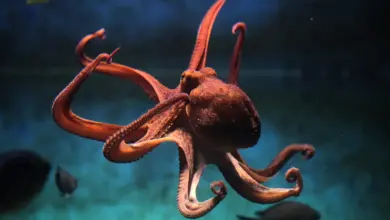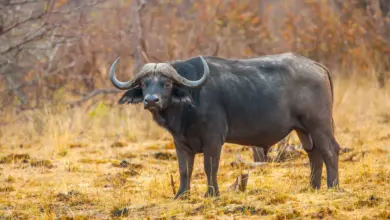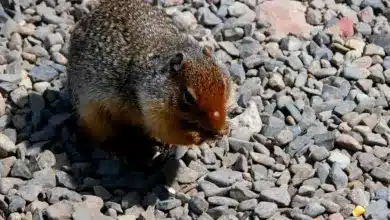What Eats Polar Bears?
What Eats Polar Bears? What Do Polar Bears Eat?
Polar bears are among the largest carnivores on land in the world. A male adult can weigh more than 1500 pounds. Polar bears are known for their large size and aggressive nature.
There are some animals that prey on the polar bears. This article will explore what polar bears eat and their typical diet.
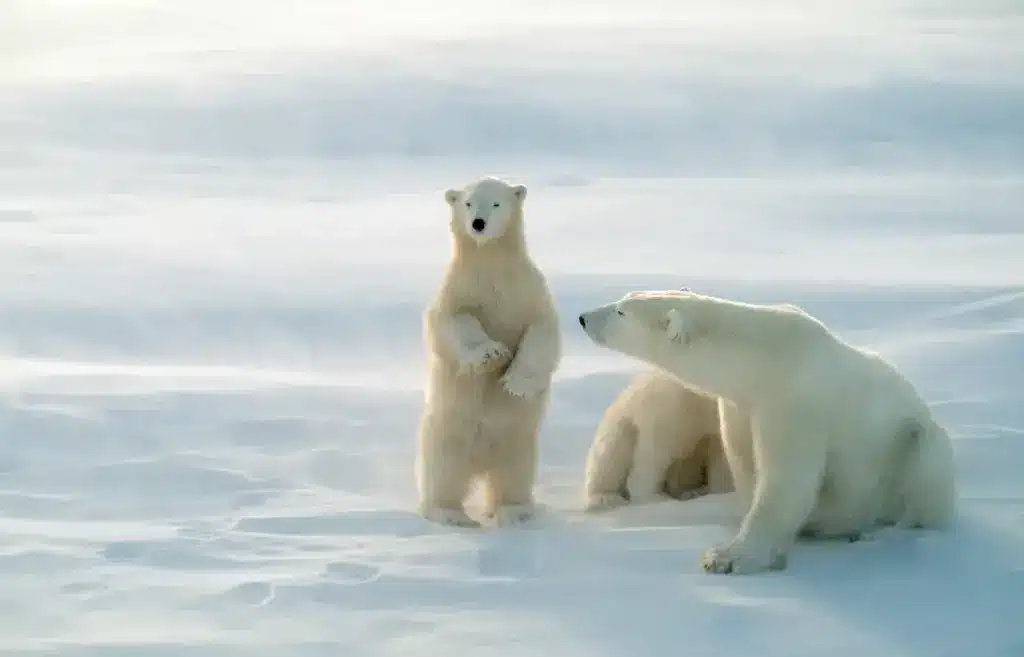
What eats Polar Bears?
Polar bears are the top predators of their Arctic habitat. Few animals would dare to engage them recklessly because of their enormous size and strength. Polar bears can be preyed on by the following predators.
Killer Whales
The killer whale is a highly intelligent predator that hunts in pods. It has been reported that they have attacked young, injured or isolated polar-bears swimming in between ice floes.
The killer whales will attempt to drown the bear by tipping it into the water. They then feed on its carcass. When working in a coordinated group, they are not intimidated by the size or strength of the bear. Killer whales will likely overlap more with polar bears as climate change expands the northern waters.
Walruses
Polar bears and walruses sometimes compete over food and territory. Rarely, large male walruses have been reported to kill bears – especially younger ones – if provoked. The walrus’s long tusks can be used to gore or impale a polar-bear during conflicts for prey or territory.
These interactions could become more frequent as walrus populations decrease due to the shrinking Arctic ice.
Polar Bears
Male polar bears can kill and attack young cubs in order to mate with their mother. Male bears that are starving may prey on other members of their species.
When food is scarce, large males will cannibalize smaller polar bears to survive. Climate change is likely to reduce sea ice hunting grounds and increase polar bear cannibalism due to nutritional stress.
Humans
As climate change brings polar bears into greater contact with humans, bears who threaten people or enter settlements may be killed out of self-defense. They may also be relocated in advance or euthanized.
This type of mortality may displace the natural rates of predation. The lack of ice habitat could lead to a greater number of hungry bears moving inland.
Polar bears are not immune to predation.
Predation rates in general are low. Global warming may be causing changes in the habitat of polar bears, making it more difficult for them to find food.

What Do Polar Bears Eat? Polar Bear Diets In The Wild
Carnivores are polar bears. They eat almost exclusively the meat of animals. This is a detailed look at the typical diet of polar bears:
Seals
Polar bears eat a lot of seals, especially ringed
and bearded seals. Polar bears wait near holes in the sea-ice to hunt seals.
The bears drag seals onto ice when they surface to breathe. They then kill them using powerful bites and claws.
Also, they stalk seals basking on the ice. Seals comprised 90% of a polar bear’s diet, according to a study. Seal populations have a significant impact on polar bear survival.
Whales
Polar bears will occasionally feed on the carcasses of whales such as bowheads and narwhals. Bears can smell the dead whales even from a distance.
The meat and blubber will be consumed for several days. Whale carcasses are a rich source of protein and fat.
Fish
Polar bears will eat cod, capelin and sculpin if seal hunting fails. The polar bears are strong enough to swim directly down and capture fish or scavenge the fish that wash up on shorelines. However, fish is a small part of the diet.
Reindeer and Caribou
Polar bears can also prey upon grazing animals such as reindeer, caribou and their young who wander too far away from the herd. Bears can also eat smaller prey such as lemmings and Arctic hares. These vertebrates can be used as a source of additional meat.
Eggs
During the nesting season, bears will steal eggs from marine bird colonies, such as cliff-nesting auks and gulls. If they catch the birds, they will also eat them. When the bears migrate inland in the summer, when there is no ice on the lake, they can get additional nutrition from the eggs.
Plants
In times of extreme hunger, polar bears will eat kelp, mushrooms, and berries. Plants are only a small part of the polar bear’s normal diet. They cannot survive solely on vegetation. Climate change may force polar bears to move inland, away from seal prey.
Human Food and Waste
Polar bears have to be closer to humans as the Arctic sea ice is shrinking. Bears can be attracted to smells in camps and cabins, causing them to enter.
The access to human food and supplies could displace the natural foraging behavior of polar bears. As bears begin to eat our food, there will be more conflict between humans and bears.
Polar bears are highly talented marine prey that feed primarily on seals in the Arctic sea ice.
Climate-driven habitat change may make it harder for bears to find their prey. The composition of their diet will alert you to any shifts in food sources from human to natural, which may create greater risks for people and bears.
How do polar bears hunt seals so effectively?
Polar bears are extremely good seal hunters because of their many physical and behavioral adaptions.
- Camouflage: The white fur of a polar bear provides camouflage for hunting on snow or ice. Seals can’t see their black nose and skin because they are hidden.
- Fat Pads: Polar bears can stalk seals silently on the ice thanks to their thick fat pads.
- Polar bears use their keen senses of smell to detect dens and breathing holes of seals hidden under the snow.
Polar bears are lethal hunters because of these adaptations, which have been perfectly adapted to their Arctic marine environment. Their specialized hunting ability may become a liability if sea ice habitat shrinks as a result of climate change.
Conclusion
Polar bears are kings in their icy domain but their survival is not guaranteed. The threat of global warming is real because it reduces sea ice and makes it harder for polar bears to access seals, which they depend on.
As the Arctic water warms and ice melts, killer whales will be able to migrate further north. Even the majestic polar bear is under pressure from other predators, and habitat changes. The polar bear’s ability to adapt to changing food resources and competition in the next century is what will determine if this iconic species of the North survives.
We are ultimately responsible for their fate and our actions to reduce greenhouse gases emissions today. Before it’s too late, we have the chance to protect the Arctic feeding grounds of polar bears. We must act quickly and decisively. Polar bears depend on us.

